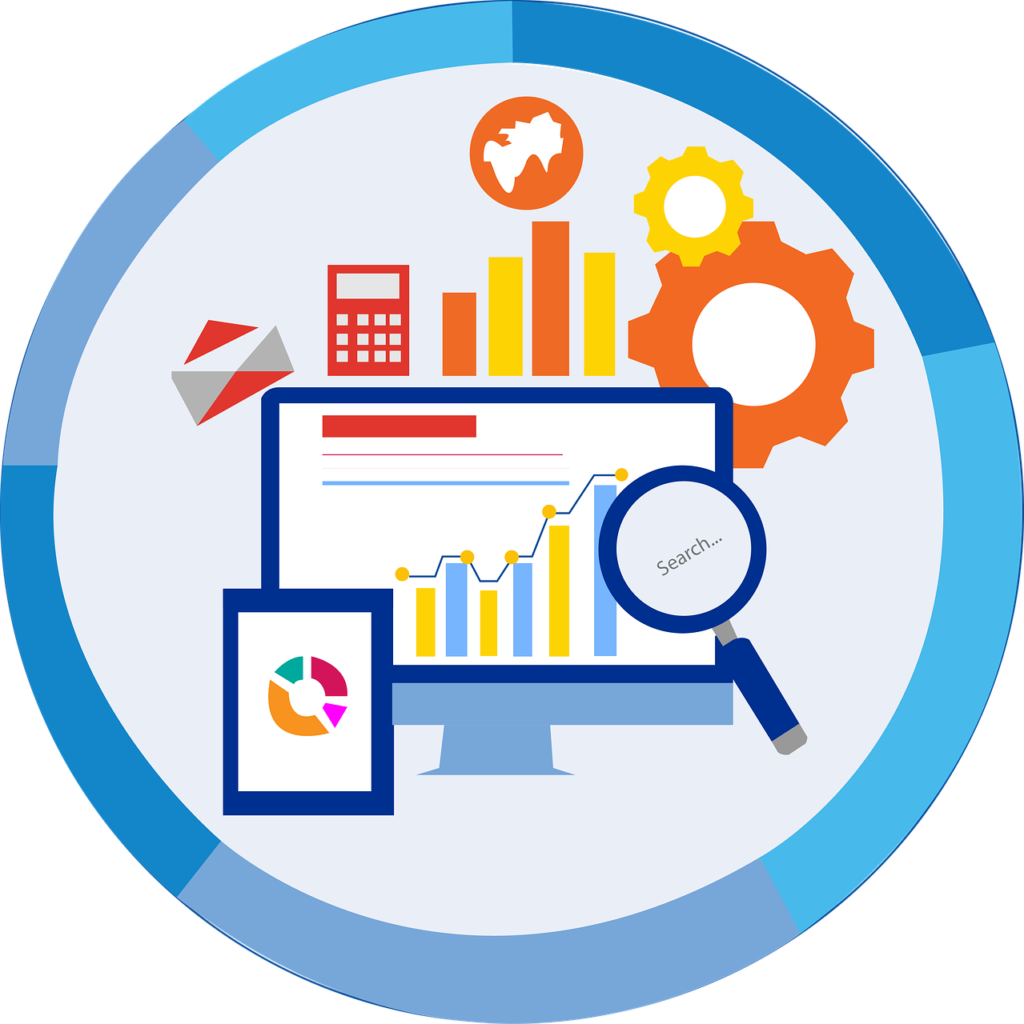This Article has been revised, edited and added to, by Poulomi Chakraborty.
- Understanding Page Speed and Its Importance
- Strategies to Improve Page Speed for Healthcare Websites
- The Relationship Between Page Speed and User Experience
- Implementing Technical SEO to Improve Page Speed
- Tools and Techniques for Monitoring and Maintaining Page Speed
- Addressing Common Page Speed Issues
- Conclusion
Page speed is a critical factor in the digital landscape, particularly for healthcare websites where users seek timely and accurate information. When patients search for medical advice, they expect fast, reliable access to information. Slow-loading websites not only frustrate users but also negatively impact search engine rankings. In this article, we will explore how page speed affects SEO for healthcare websites, delve into the technical aspects that influence loading times, and provide actionable strategies to enhance website performance.
Understanding Page Speed and Its Importance

Page speed refers to the time it takes for a webpage to fully load and display its content. This metric is crucial for user experience and directly impacts how visitors interact with your site.
In the context of healthcare websites, where users often seek urgent medical information, a delay of even a few seconds can lead to a poor user experience and a loss of potential patients.
To illustrate the importance of page speed, let’s compare two hypothetical healthcare websites. Site A loads quickly, within two seconds, providing users immediate access to content about common medical conditions, treatment options, and appointment booking.
Site B, on the other hand, takes over five seconds to load, causing frustration and leading many users to abandon the site in search of faster alternatives.
From an SEO perspective, search engines like Google prioritize fast-loading websites. Google’s algorithm considers page speed as a ranking factor, meaning that slower sites are likely to rank lower in search results.
This can significantly reduce the visibility of healthcare websites, making it harder for potential patients to find them. Therefore, optimizing page speed is not just about improving user experience but also about enhancing SEO performance and ensuring that your website ranks well in search engine results.
Comparing User Engagement on Fast and Slow Websites
The impact of page speed on user engagement is profound. Fast-loading websites tend to have lower bounce rates, higher dwell times, and more pages per session. These metrics indicate that users are finding the content valuable and engaging, leading to longer visits and deeper exploration of the site.
For healthcare websites, this translates to patients spending more time reading about health conditions, treatments, and available services, ultimately leading to higher conversion rates, such as booking appointments or contacting healthcare providers.
On the contrary, slow-loading websites suffer from high bounce rates as users quickly abandon them in frustration. This not only impacts user engagement but also sends negative signals to search engines, which can further harm SEO rankings.
When users leave a site almost immediately after landing on it, search engines interpret this as a sign that the content is not relevant or valuable, leading to lower rankings in search results.
Moreover, the perception of your healthcare brand can be affected by page speed. A fast, responsive website conveys professionalism and reliability, which are crucial attributes in the healthcare industry.
Patients are more likely to trust and return to a site that consistently delivers a smooth, hassle-free experience. Conversely, a slow website can create a negative impression, making users question the reliability of the information and services provided.
The Technical Aspects of Page Speed
Several technical factors contribute to page speed, and understanding these can help in identifying areas for improvement. Key components include server response time, file sizes, and the efficiency of the website’s code. Let’s delve deeper into these aspects and how they influence page speed.
Server Response Time
Server response time is the duration it takes for a server to respond to a user’s request. A slow server response can significantly delay page loading times. Factors such as server performance, hosting quality, and the geographical location of the server relative to the user can impact response times. For healthcare websites, choosing a reliable hosting provider and optimizing server performance are essential steps in improving page speed.
File Sizes and Compression
Large files, particularly images and videos, can slow down a website. Optimizing file sizes through compression can reduce load times without compromising quality. For instance, using tools to compress images and videos ensures that they load faster, enhancing overall page speed. Additionally, using modern file formats like WebP for images can further reduce file sizes and improve loading times.
Code Efficiency
The efficiency of the website’s code also plays a crucial role in page speed. Bloated, inefficient code can slow down a website significantly. Streamlining HTML, CSS, and JavaScript by removing unnecessary code, minimizing the use of external scripts, and employing techniques like lazy loading for images and videos can improve page speed. Lazy loading delays the loading of images and videos until they are needed, reducing initial load times and improving user experience.
Caching and Content Delivery Networks (CDNs)
Caching involves storing copies of web pages so that they can be served faster to users upon subsequent visits. Implementing browser caching and server-side caching can enhance page speed by reducing the need to reload the entire page each time. Content Delivery Networks (CDNs) further improve page speed by distributing content across multiple servers worldwide, ensuring that users receive data from the nearest server, thereby reducing load times.
Tools for Measuring Page Speed
To optimize page speed effectively, it’s crucial to measure and monitor performance regularly. Several tools can help analyze page speed and identify areas for improvement. Google PageSpeed Insights, GTmetrix, and Pingdom are popular tools that provide detailed reports on page speed, highlighting specific issues and offering recommendations for optimization. Using these tools, healthcare websites can track their performance, make necessary adjustments, and ensure that they provide a fast, efficient user experience.
Strategies to Improve Page Speed for Healthcare Websites

Improving page speed is essential for enhancing user experience and SEO performance. For healthcare websites, where timely access to information is crucial, implementing effective strategies to boost page speed can make a significant difference. Let’s explore various techniques and best practices that can help healthcare websites load faster and perform better.
Optimizing Images and Media
Images and media files often constitute a large portion of a webpage’s load time. Optimizing these elements can significantly enhance page speed without sacrificing quality.
Image Compression and Formats
Compressing images reduces their file size, allowing them to load faster. Tools like TinyPNG and JPEG-Optimizer can compress images without noticeable loss of quality. Additionally, using modern image formats such as WebP can further reduce file sizes while maintaining high quality.
Responsive Images
Implementing responsive images ensures that different versions of an image are served based on the user’s device and screen size. This practice can prevent unnecessary loading of large images on mobile devices, thus improving load times. HTML5’s <picture> element can be used to specify different image sources for various screen sizes.
Minimizing HTTP Requests
Each element on a webpage, including images, scripts, and stylesheets, requires an HTTP request to load. Minimizing these requests can significantly speed up page loading times.
Combining Files
Combining CSS and JavaScript files reduces the number of HTTP requests needed to load a page. Tools like Gulp and Webpack can automate this process, merging multiple files into a single, more efficient file.
Reducing Unnecessary Elements
Removing unnecessary elements from your website, such as unused scripts and styles, can also help minimize HTTP requests. Regularly auditing your website to identify and eliminate these elements can streamline your code and enhance performance.
Leveraging Browser Caching
Browser caching stores copies of web pages so that they can be loaded quickly on subsequent visits. By leveraging browser caching, you can reduce the need to reload the entire page each time a user visits your site.
Setting Cache-Control Headers
Setting appropriate cache-control headers allows you to specify how long browsers should store cached versions of your web pages. This can be particularly useful for elements that do not change frequently, such as images, stylesheets, and scripts.
Utilizing Content Delivery Networks (CDNs)
Content Delivery Networks (CDNs) distribute your website’s content across multiple servers worldwide. By serving content from the server closest to the user, CDNs can significantly reduce load times.
Choosing the Right CDN
Selecting a reliable CDN provider is crucial for optimizing page speed. Providers like Cloudflare, Akamai, and Amazon CloudFront offer robust CDN services that can enhance the performance and reliability of your healthcare website.
Optimizing Server Performance
The performance of your web server plays a critical role in page speed. Optimizing server settings and choosing the right hosting provider can make a significant difference.
Upgrading Hosting Plans
If your website experiences high traffic, upgrading to a higher-tier hosting plan with more resources can improve server response times. Dedicated hosting or virtual private servers (VPS) can offer better performance compared to shared hosting plans.
Implementing Server-Side Caching
Server-side caching stores copies of web pages on the server, reducing the need to generate new pages for each request. Implementing server-side caching can significantly enhance page speed, especially for dynamic content.
Streamlining Code and Scripts
Efficient code and scripts are essential for fast-loading websites. Streamlining your website’s code can eliminate unnecessary delays and improve overall performance.
Minifying CSS and JavaScript
Minifying CSS and JavaScript involves removing unnecessary characters, such as whitespace and comments, from your code. Tools like UglifyJS and CSSNano can automate this process, reducing file sizes and improving load times.
Asynchronous Loading
Loading scripts asynchronously allows them to load independently of the rest of the page, preventing delays caused by slow-loading scripts. Implementing asynchronous loading for non-critical scripts can enhance page speed and improve user experience.
Reducing Redirects
Each redirect on your website adds additional HTTP requests and increases load times. Minimizing the use of redirects can streamline page loading and enhance performance.
Auditing Redirects
Regularly auditing your website to identify and eliminate unnecessary redirects can help improve page speed. Tools like Screaming Frog SEO Spider can help you identify redirects and streamline your site’s architecture.
Monitoring and Continuous Improvement
Improving page speed is an ongoing process that requires regular monitoring and adjustments. Utilizing performance monitoring tools and conducting regular audits can help ensure that your website maintains optimal performance.
Using Performance Monitoring Tools
Tools like Google PageSpeed Insights, GTmetrix, and Pingdom provide detailed reports on page speed and highlight areas for improvement. Regularly using these tools can help you track your website’s performance and make necessary adjustments.
Conducting Regular Audits
Regular audits of your website’s performance can help identify issues and opportunities for improvement. Conducting audits periodically ensures that your website remains optimized and provides a fast, reliable experience for users.
The Relationship Between Page Speed and User Experience

Page speed is intrinsically linked to user experience, especially in the healthcare sector where timely access to information can significantly impact patient outcomes. A fast-loading website enhances the overall user experience, encouraging users to stay longer, engage more deeply with the content, and return in the future. Let’s explore how page speed influences various aspects of user experience on healthcare websites.
Reducing Bounce Rates
Bounce rate is a critical metric that indicates the percentage of visitors who leave a website after viewing only one page. High bounce rates often signal that users are not finding the content engaging or the site easy to navigate. Slow page load times are a common culprit for high bounce rates, as users are likely to abandon a site that takes too long to load.
For healthcare websites, reducing bounce rates is essential for retaining visitors and encouraging them to explore more content. When a page loads quickly, users can immediately access the information they need, whether it’s details about a medical condition, treatment options, or contact information for healthcare providers. This positive experience encourages them to stay on the site longer, reducing bounce rates and improving overall engagement.
Enhancing Dwell Time and Pages Per Session
Dwell time, the amount of time a visitor spends on a page before returning to the search results, is another crucial metric influenced by page speed. A fast-loading website ensures that users can quickly find and consume content, leading to longer dwell times.
For healthcare websites, where users often need detailed information, ensuring that pages load promptly allows users to read and absorb the content without frustration.
Similarly, pages per session, which measures the average number of pages a user visits during a single session, is affected by page speed. A website that loads quickly across all pages encourages users to explore multiple sections, such as different medical conditions, patient testimonials, and available services.
This deeper engagement not only improves user experience but also sends positive signals to search engines about the site’s relevance and quality.
Building Trust and Credibility
Trust and credibility are paramount in healthcare. A fast-loading website conveys professionalism and reliability, essential traits for any healthcare provider. When patients access a website that loads quickly and provides valuable information without delays, it enhances their perception of the provider’s competence and dedication to patient care.
Conversely, a slow website can erode trust, making users question the reliability of the information provided. In the healthcare context, this can be particularly detrimental, as patients rely heavily on trustworthy sources for making informed health decisions. Ensuring that your website loads quickly helps build and maintain the trust necessary for effective patient engagement and loyalty.
Facilitating Mobile User Experience
With the increasing use of mobile devices to access health information, optimizing page speed for mobile is crucial. Mobile users often experience slower internet connections compared to desktop users, making fast-loading pages even more critical. A mobile-optimized website that loads quickly can significantly enhance the user experience for patients accessing information on the go.
Implementing responsive design ensures that your website adapts to different screen sizes and devices, providing a seamless experience across platforms. Fast-loading mobile pages improve accessibility, allowing users to quickly find and interact with content, whether they are searching for symptoms, booking appointments, or accessing patient portals.
Improving Conversion Rates
Conversion rates, which measure the percentage of visitors who complete a desired action, such as booking an appointment or filling out a contact form, are directly influenced by page speed. A fast-loading website provides a smooth user experience, reducing friction and making it easier for users to take action.
For healthcare websites, improving conversion rates is vital for attracting and retaining patients. When a user can quickly access information about services, read patient reviews, and book appointments without delays, they are more likely to convert. Optimizing page speed enhances the overall user journey, facilitating conversions and supporting the growth of the healthcare practice.
The Psychological Impact of Speed
Page speed also has a psychological impact on users. Research shows that users perceive faster websites as more credible and trustworthy. The instant gratification of a fast-loading site creates a positive user experience, encouraging return visits and ongoing engagement. For healthcare providers, this psychological effect can translate into stronger patient relationships and increased loyalty.

Implementing Technical SEO to Improve Page Speed
To achieve optimal page speed and enhance SEO performance for healthcare websites, it’s essential to implement technical SEO best practices. These practices focus on optimizing the underlying technical aspects of your site to ensure fast load times, efficient performance, and a seamless user experience.
Server Optimization and Hosting Solutions
Choosing the right server and hosting solution is foundational to improving page speed. A high-quality hosting provider can significantly influence how quickly your website loads, particularly during high traffic periods. For healthcare websites, where reliability and performance are paramount, investing in a robust hosting plan is critical.
Upgrading to a Virtual Private Server (VPS) or dedicated hosting can offer better performance compared to shared hosting. These options provide more resources and greater control over server settings, allowing for better optimization. Additionally, selecting a hosting provider with data centers close to your primary audience can reduce latency and improve load times.
Implementing Efficient Caching Mechanisms
Caching is a powerful technique that can dramatically improve page speed by storing copies of web pages, reducing the need to generate new pages for each request. There are several types of caching mechanisms to consider.
Browser caching stores static resources (such as images, stylesheets, and scripts) on the user’s local device. Setting appropriate cache expiration headers allows browsers to reuse these resources on subsequent visits, reducing load times.
Server-side caching, such as using a Content Management System (CMS) caching plugin, stores copies of dynamically generated pages on the server. This reduces the load on the server and speeds up page delivery to users. Popular caching plugins for platforms like WordPress include W3 Total Cache and WP Super Cache.
Content Delivery Networks (CDNs) enhance caching by distributing copies of your website’s content across multiple servers around the world. CDNs serve content from the server closest to the user, reducing latency and improving load times. Implementing a CDN can be particularly beneficial for healthcare websites with a global audience.
Minifying and Combining Files
Minifying and combining CSS, JavaScript, and HTML files can reduce their size and the number of HTTP requests needed to load a page. Minification involves removing unnecessary characters, such as whitespace, comments, and line breaks, from your code. Tools like UglifyJS for JavaScript and CSSNano for CSS can automate this process.
Combining multiple CSS and JavaScript files into a single file reduces the number of requests the browser needs to make, further speeding up page load times. Using tools like Gulp or Webpack can help streamline this process and maintain an efficient codebase.
Asynchronous Loading and Deferred Scripts
Loading scripts asynchronously and deferring non-critical scripts can significantly enhance page speed. Asynchronous loading allows scripts to load independently of the rest of the page, preventing them from blocking other elements from rendering. Adding the async attribute to your script tags can implement this.
Deferring scripts means postponing the loading of non-essential scripts until after the main content has loaded. This ensures that critical content is displayed to users as quickly as possible. Using the defer attribute can help achieve this for scripts that are not immediately necessary for the page’s functionality.
Optimizing Fonts and External Resources
Fonts and external resources, such as third-party widgets and tracking scripts, can add significant load time if not optimized. Reducing the number of custom fonts and using web-safe fonts can minimize the impact on page speed. Additionally, using font-display: swap; in your CSS can improve rendering performance by displaying fallback fonts until the custom font loads.
For external resources, assess the necessity of each script and widget. Removing or optimizing non-essential elements can reduce load times. Hosting essential scripts locally rather than relying on third-party servers can also enhance performance by reducing dependencies and potential delays.
Ensuring Mobile Optimization
With the increasing number of users accessing healthcare websites via mobile devices, optimizing for mobile is critical. Mobile users often experience slower internet connections, making page speed even more important. Implementing responsive design ensures that your website adapts to different screen sizes and devices, providing an optimal viewing experience.
Using Google’s Accelerated Mobile Pages (AMP) can further improve mobile page speed by creating simplified, fast-loading versions of your web pages. AMP strips down your code to its essentials, prioritizing speed and performance. Implementing AMP for key pages, such as blog articles and service descriptions, can enhance mobile user experience and improve SEO.
Regular Monitoring and Continuous Improvement
Page speed optimization is an ongoing process that requires regular monitoring and adjustments. Using tools like Google PageSpeed Insights, GTmetrix, and Pingdom can help you track performance and identify areas for improvement. These tools provide detailed reports on various aspects of page speed, offering actionable recommendations to enhance performance.
Conducting regular audits of your website’s speed and performance ensures that any issues are promptly addressed. Keeping abreast of the latest developments in web performance and SEO can help you implement new techniques and stay ahead of the competition. Continuously optimizing your site for speed not only improves user experience but also supports better search engine rankings and overall SEO performance.
Tools and Techniques for Monitoring and Maintaining Page Speed

Maintaining optimal page speed requires ongoing monitoring and adjustments. Utilizing the right tools and techniques can help healthcare websites ensure consistently fast performance, providing a seamless experience for users and supporting better SEO outcomes. This section explores various tools and strategies for monitoring and maintaining page speed effectively.
Google PageSpeed Insights
Google PageSpeed Insights is a widely used tool that analyzes a webpage’s performance on both mobile and desktop devices. It provides a score for page speed and detailed insights into specific issues that may be affecting load times. The tool offers suggestions for improvement, such as optimizing images, leveraging browser caching, and minimizing JavaScript.
For healthcare websites, regularly using PageSpeed Insights can help identify areas for optimization and track progress over time. By addressing the recommendations provided by the tool, healthcare providers can ensure their websites maintain high performance and meet users’ expectations for speed and reliability.
GTmetrix
GTmetrix is another valuable tool for analyzing website performance. It offers a comprehensive report that includes page load time, total page size, and the number of requests. GTmetrix also provides a detailed breakdown of various performance metrics and suggests specific optimizations to enhance page speed.
The tool’s waterfall chart is particularly useful for visualizing the loading sequence of different elements on a page. This visualization can help identify bottlenecks and prioritize areas for improvement. For healthcare websites, using GTmetrix can ensure that all elements are optimized for fast loading, from images and scripts to server response times.
Pingdom
Pingdom is a robust website monitoring tool that offers real-time performance insights. It monitors page speed from multiple locations around the world, providing a global perspective on your website’s performance. Pingdom’s detailed reports include load times, page size, and performance grades, along with recommendations for optimization.
For healthcare providers, Pingdom’s real-time monitoring can help quickly identify and resolve performance issues, ensuring that users receive a fast and reliable experience regardless of their location. The tool’s uptime monitoring feature also ensures that the website remains accessible and performs well under different conditions.
WebPageTest
WebPageTest is a powerful tool that provides in-depth performance testing from multiple locations and browsers. It offers detailed reports on load times, time to first byte (TTFB), and various other performance metrics. WebPageTest also allows for advanced testing scenarios, such as simulating different network conditions and testing mobile performance.
Using WebPageTest, healthcare providers can gain a comprehensive understanding of their website’s performance across different environments. The tool’s ability to simulate various conditions ensures that the website is optimized for a wide range of user scenarios, from desktop to mobile and from fast to slow network connections.
Lighthouse
Lighthouse is an open-source tool from Google that provides automated audits for performance, accessibility, SEO, and more. It generates detailed reports with actionable insights, helping identify areas for improvement across multiple aspects of a website’s performance.
For healthcare websites, Lighthouse can be integrated into the development workflow to ensure ongoing optimization. Regularly running Lighthouse audits can help maintain high standards for page speed, accessibility, and overall user experience, supporting better SEO performance and patient satisfaction.
Implementing a Performance Budget
A performance budget sets limits on various aspects of page performance, such as load times, file sizes, and the number of requests. By establishing a performance budget, healthcare providers can ensure that their websites remain optimized and avoid performance regressions over time.
Creating a performance budget involves setting specific goals for key performance metrics, such as a maximum page load time of three seconds or a total page size of less than two megabytes. Regularly monitoring these metrics and making adjustments as needed can help maintain optimal performance and provide a consistent user experience.
Continuous Integration and Deployment (CI/CD)
Implementing continuous integration and deployment (CI/CD) practices can streamline the process of maintaining page speed. CI/CD involves automating the integration of code changes and the deployment of updates, ensuring that performance optimizations are consistently applied.
For healthcare websites, using CI/CD tools like Jenkins, Travis CI, or GitHub Actions can automate performance testing and ensure that any changes to the website do not negatively impact page speed. Integrating performance tests into the CI/CD pipeline allows for early detection of issues and quick resolution, maintaining high performance and reliability.
Regular Performance Audits
Conducting regular performance audits is essential for maintaining optimal page speed. These audits should involve a comprehensive review of various performance metrics, including load times, server response times, and the efficiency of code and scripts.
Healthcare providers can schedule performance audits on a monthly or quarterly basis, using tools like PageSpeed Insights, GTmetrix, and WebPageTest. Audits should also include a review of user feedback and analytics data to identify any performance-related issues that may impact the user experience.
Leveraging Analytics and User Feedback
Analytics tools like Google Analytics can provide valuable insights into how users interact with your website and identify performance-related issues. Monitoring metrics such as bounce rate, average session duration, and user flow can help pinpoint areas where page speed improvements are needed.
In addition to analytics data, gathering user feedback through surveys and usability tests can provide firsthand insights into the user experience. Understanding how real users perceive and interact with your website can inform performance optimization efforts and ensure that improvements align with user needs and expectations.
Addressing Common Page Speed Issues

Healthcare websites often encounter specific challenges that can impact page speed. Identifying and addressing these common issues is crucial for maintaining optimal performance and providing a seamless user experience. This section explores some typical page speed problems and offers practical solutions to resolve them.
Large Image Files
Large image files are a common culprit behind slow page load times. High-resolution images are essential for creating a visually appealing website, but they can significantly impact performance if not optimized.
Image Optimization Techniques
To optimize images, start by compressing them using tools like TinyPNG or ImageOptim. These tools reduce file sizes without compromising quality. Converting images to modern formats such as WebP can also help, as these formats offer better compression and quality.
Another effective technique is to implement responsive images. This involves using the <picture> element or the srcset attribute in HTML to serve different image sizes based on the user’s device. Responsive images ensure that users only download the necessary image size, improving load times on mobile devices.
Unoptimized Code
Inefficient code can slow down a website by increasing the amount of data that needs to be processed and loaded. This includes both HTML and CSS as well as JavaScript files.
Minification and Combination
Minifying HTML, CSS, and JavaScript involves removing unnecessary characters like whitespace and comments from the code. Tools such as UglifyJS for JavaScript and CSSNano for CSS can automate this process, reducing file sizes and improving load times.
Combining multiple CSS and JavaScript files into a single file can reduce the number of HTTP requests required to load a page. Using build tools like Gulp or Webpack can help automate this process and streamline your codebase.
Excessive HTTP Requests
Each element on a webpage, including images, scripts, and stylesheets, requires an HTTP request to load. Excessive HTTP requests can slow down page load times and impact performance.
Reducing HTTP Requests
Reducing HTTP requests involves minimizing the number of elements that need to be loaded. This can be achieved by combining CSS and JavaScript files, using CSS sprites for images, and removing unnecessary elements from your pages.
Implementing lazy loading for images and videos ensures that media elements only load when they are needed, further reducing the number of initial HTTP requests. Lazy loading can be implemented using the loading="lazy" attribute in HTML for images and iframes.
Slow Server Response Times
Slow server response times can significantly impact page speed, especially during high traffic periods. The time it takes for a server to respond to a user’s request (Time to First Byte, or TTFB) is a critical factor in overall page load times.
Improving Server Response Times
Choosing a high-quality hosting provider with robust performance capabilities is essential for improving server response times. Upgrading to a Virtual Private Server (VPS) or dedicated hosting can offer better performance compared to shared hosting.
Implementing server-side caching can also reduce server response times by storing copies of web pages and serving them quickly to users. Content Delivery Networks (CDNs) distribute content across multiple servers worldwide, reducing latency and improving load times by serving content from the nearest server to the user.
Uncompressed and Unminified JavaScript and CSS
Uncompressed and unminified JavaScript and CSS files can bloat a website’s codebase, leading to slower load times. Optimizing these files is essential for improving performance.
Compression and Minification
Compressing JavaScript and CSS files using Gzip or Brotli can significantly reduce file sizes and improve load times. Enabling Gzip or Brotli compression on your server ensures that files are compressed before being sent to the user’s browser.
Minifying JavaScript and CSS involves removing unnecessary characters and combining files to reduce the number of HTTP requests. Using build tools like Gulp or Webpack can automate this process and ensure that your codebase remains efficient and optimized.
Inefficient Use of Third-Party Scripts
Third-party scripts, such as social media widgets, analytics tools, and advertising scripts, can add significant load time if not managed properly. These scripts often introduce additional HTTP requests and increase the amount of data that needs to be processed.
Managing Third-Party Scripts
Assess the necessity of each third-party script and remove any that are not essential. For necessary scripts, consider loading them asynchronously or deferring their loading until after the main content has loaded. This ensures that critical content is displayed to users as quickly as possible.
Hosting essential scripts locally rather than relying on third-party servers can also enhance performance by reducing dependencies and potential delays. Regularly reviewing and optimizing third-party scripts can help maintain fast load times and improve overall performance.
Lack of Browser Caching
Browser caching stores copies of web pages on the user’s local device, reducing the need to reload the entire page on subsequent visits. Without effective browser caching, users may experience slower load times each time they revisit your site.
Implementing Browser Caching
Setting appropriate cache-control headers allows you to specify how long browsers should store cached versions of your web pages. This can be particularly useful for static resources like images, stylesheets, and scripts that do not change frequently.
Using tools like Google’s Lighthouse can help identify caching issues and provide recommendations for implementing effective browser caching. Ensuring that your website leverages browser caching can significantly reduce load times for returning visitors and enhance the overall user experience.
Conclusion
In conclusion, optimizing page speed is crucial for the success of healthcare websites. Fast-loading pages enhance user experience, build trust, and improve engagement, which are vital in the healthcare industry where timely access to information is essential. By addressing common issues such as large image files, unoptimized code, and excessive HTTP requests, healthcare providers can significantly improve load times.
Implementing technical SEO best practices, leveraging tools for regular monitoring, and continuously refining performance ensures that websites remain fast, reliable, and efficient. This holistic approach not only boosts SEO rankings but also enhances patient satisfaction and supports better healthcare outcomes. Prioritizing page speed is a strategic investment that yields substantial benefits for both users and healthcare providers.
READ NEXT:
- Competitive Analysis: How to Outperform the Competition
- 21 Best Ad Campaign Management Tools: Our Take
- User-Generated Content: A Boon or a Bane?
- Tech Startup SEO Guide: Navigating Challenges and Opportunities
- How GDPR Affects Healthcare SEO




















Comments are closed.